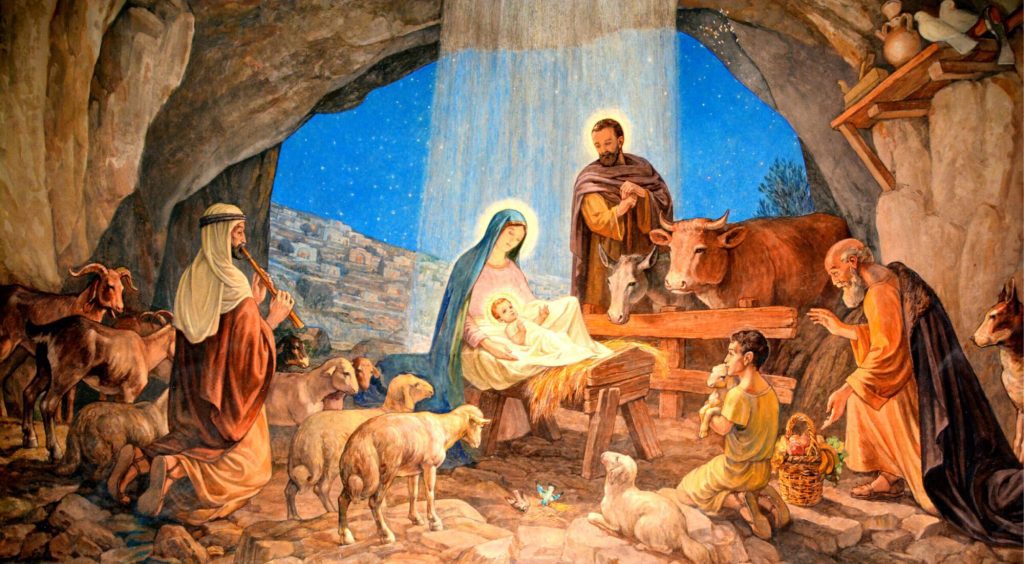In Christianity, Christology is a branch of theology that concerns Jesus. Different denominations have different opinions on questions like whether Jesus was human, divine, or both, and as a messiah what his role would be in the freeing of the Jewish people from foreign rulers or in the prophesied Kingdom of God, and in the salvation from what would otherwise be the consequences of sin.
The earliest Christian writings gave several titles to Jesus, such as Son of Man, Son of God, Messiah, and Kyrios, which were all derived from the Hebrew scriptures. These terms centered around two opposing themes, namely “Jesus as a preexistent figure who becomes human and then returns to God”, versus adoptionism – that Jesus was human who was “adopted” by God at his baptism, crucifixion, or resurrection.
From the second to the fifth centuries, the relation of what Christians there considered to be the human and divine nature of Christ was a major focus of debates in the early church and at the first seven ecumenical councils. The Council of Chalcedon in 451 CE issued a formulation of the hypostatic union of the two natures of Christ; one human and one divine, “united with neither confusion nor division”.
Most of the major branches of Western Christianity and Eastern Orthodoxy subscribe to this formulation; while many branches of Oriental Orthodox Churches reject it, subscribing to monophysitism. In other words, Jesus both divinity and humanity are equally present within a single (hence the Greek prefix mia-) nature in the person of Christ.
Christology: Definition and Approaches
So Christology is the study of the nature (person) and work (role in salvation) of Jesus Christ. For example it studies Jesus Christ’s humanity and divinity, and the relation between these two aspects; and the role he plays in salvation. First there is “Ontological Christology” which analyzes the nature or being of Jesus Christ. Second, there is “Functional Christology” which analyzes the works of Jesus Christ. And lastly, there is “soteriological Christology” which analyzes the “salvific” standpoints of Christology.
Several approaches can be distinguished within Christology. The term “Christology from above” or “high Christology” refers to approaches that include aspects of divinity; such as Lord and Son of God, and the idea of the pre-existence of Christ as the Logos (the Word), as expressed in the prologue to the Gospel of John. These approaches interpret the works of Christ in terms of his divinity.
According to Pannenberg, Christology from above ” was far more common in the ancient Church, beginning with Ignatius of Antioch and the second-century Apologists.” But the term “Christology from below” or “low Christology” refers to approaches that begin with the human aspects and the ministry of Jesus (including the miracles, parables, etc.) and move towards his divinity and the mystery of the incarnation of Jesus.
Person of Christ
A basic Christological teaching is that the person of Jesus Christ is both human and divine. The human and divine natures of Jesus Christ apparently (prosopic) form a duality; as they coexist within one person (hypostasis). Even thou there are no direct discussions in the New Testament regarding the dual nature of the Person of Christ as both divine and human; and since the early days of Christianity, theologians have debated various approaches to the understanding of these natures, at times resulting in ecumenical councils, and schisms.
Some historical Christological doctrines gained broad support. We show them here with simplified summaries; see the linked articles for details.
- Monophysitism (monophysite controversy, 3rd-8th c.) After the union of the divine and the human in the historical incarnation, Jesus Christ had only a single nature
- Miaphysitism (Oriental Orthodox churches) In the person of Jesus Christ, divine nature and human nature are united in a compound nature (“physis”)
- Dyophysitism (Chalcedonian Creed) Christ maintained two natures, one divine and one human, after the Incarnation
- Monarchianism (Adoptionism (2nd c. onwards) and Modalism) God as one in contrast to the doctrine of the Trinity
Influential Christologies which were broadly condemned as heretical is:
- Docetism (3rd-4th c.) claimed the human form of Jesus was a mere semblance without any true reality
- Arianism (4th c.) viewed Jesus as primarily an ordinary mortal; albeit in contact with or infused by the Divine
- Nestorianism (5th c.) considered the two natures (human and divine) of Jesus Christ almost entirely distinct
Various church councils, mainly in the 4th and 5th centuries, resolved most of these controversies, making the doctrine of the Trinity orthodox in nearly all branches of Christianity. Among them, only the Dyophysite doctrine was recognized as true and not heretical, belonging to the Christian orthodoxy and deposit of faith.








